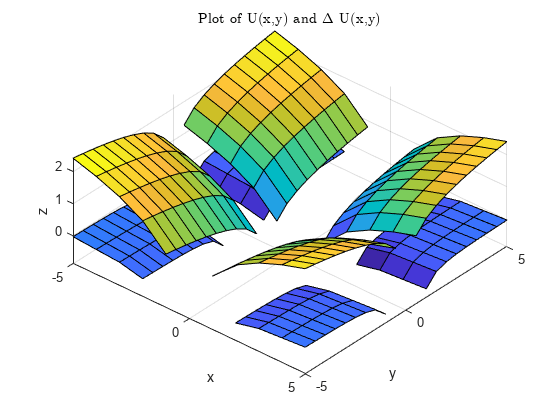del2
离散拉普拉斯算子
说明
L = del2(U,hx,hy,...,hN)U 的每个维度中的点之间指定间距 hx,hy,...,hN。将每个间距输入指定为坐标的标量或向量。间距输入数必须等于 U 中的维数。
第一个间距值
hx指定点的 x 间距(标量)或 x 坐标(向量)。如果是向量,则其长度必须等于size(U,2)。第二个间距值
hy指定点的 y 间距(标量)或 y 坐标(向量)。如果是向量,则其长度必须等于size(U,1)。所有其他间距值指定
U中对应维度的各点的间距(标量)或坐标(向量)。对于n > 2的情况,如果第n个间距输入是向量,则其长度必须等于size(U,n)。
示例
输入参数
输出参量
详细信息
算法
如果输入 U 是一个矩阵,则 L 的内部点通过取 U 中的点与其四个相邻点的平均值之间的差值找到:
然后,del2 会通过线性外插第二个差分来从内部延伸计算 L 边界上的值。此公式会针对多维 U 进行扩展。
扩展功能
版本历史记录
在 R2006a 之前推出


